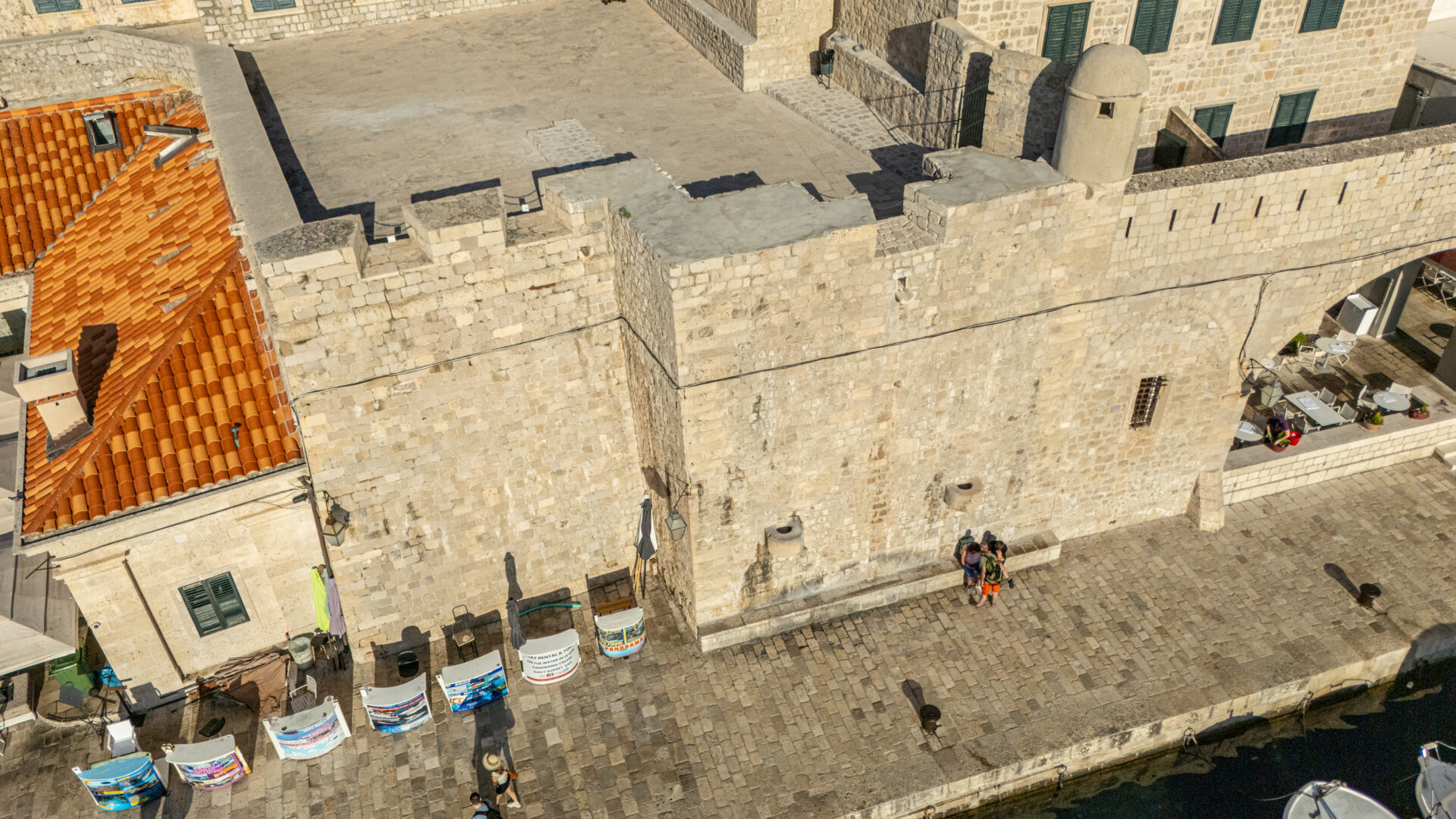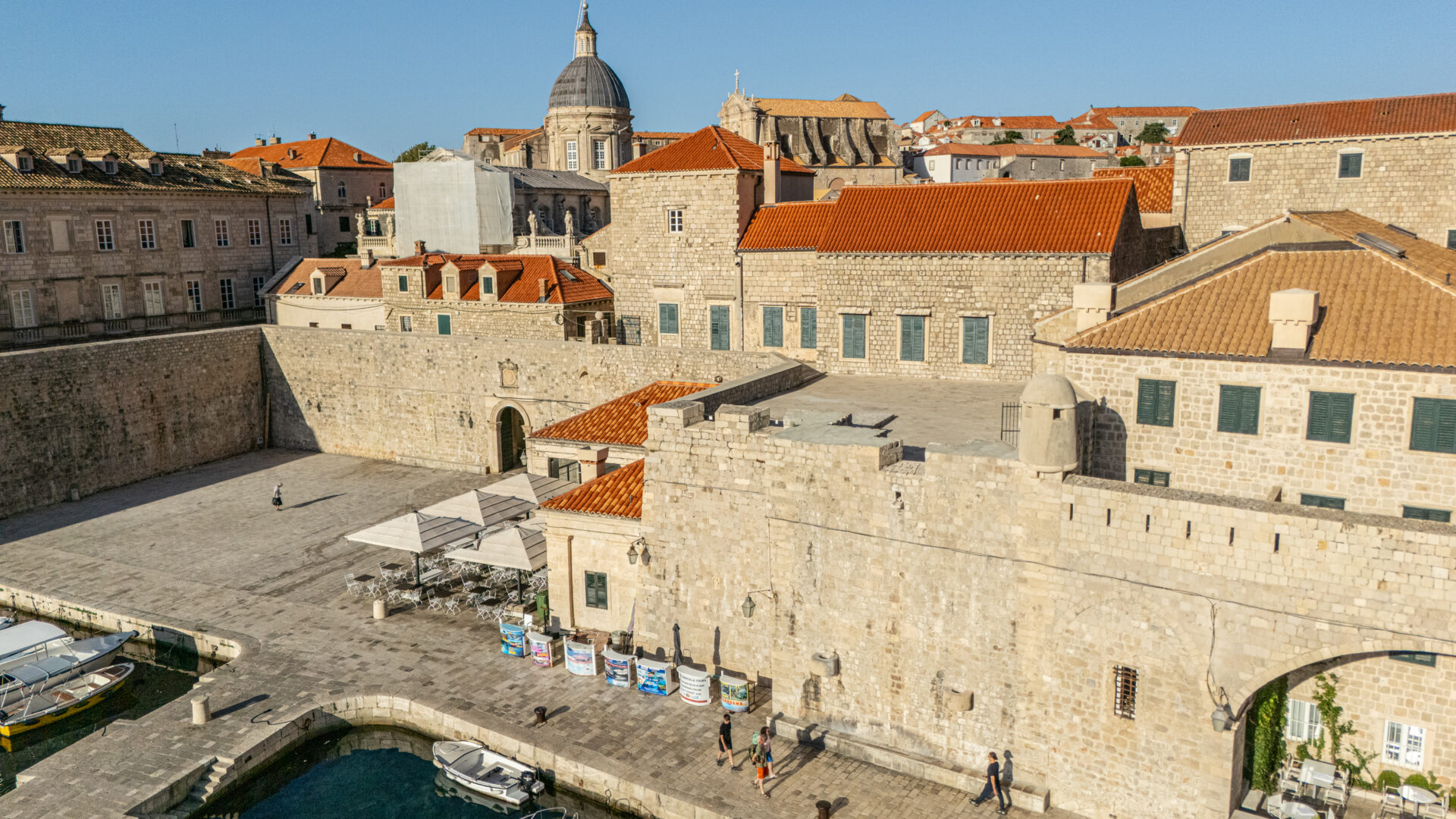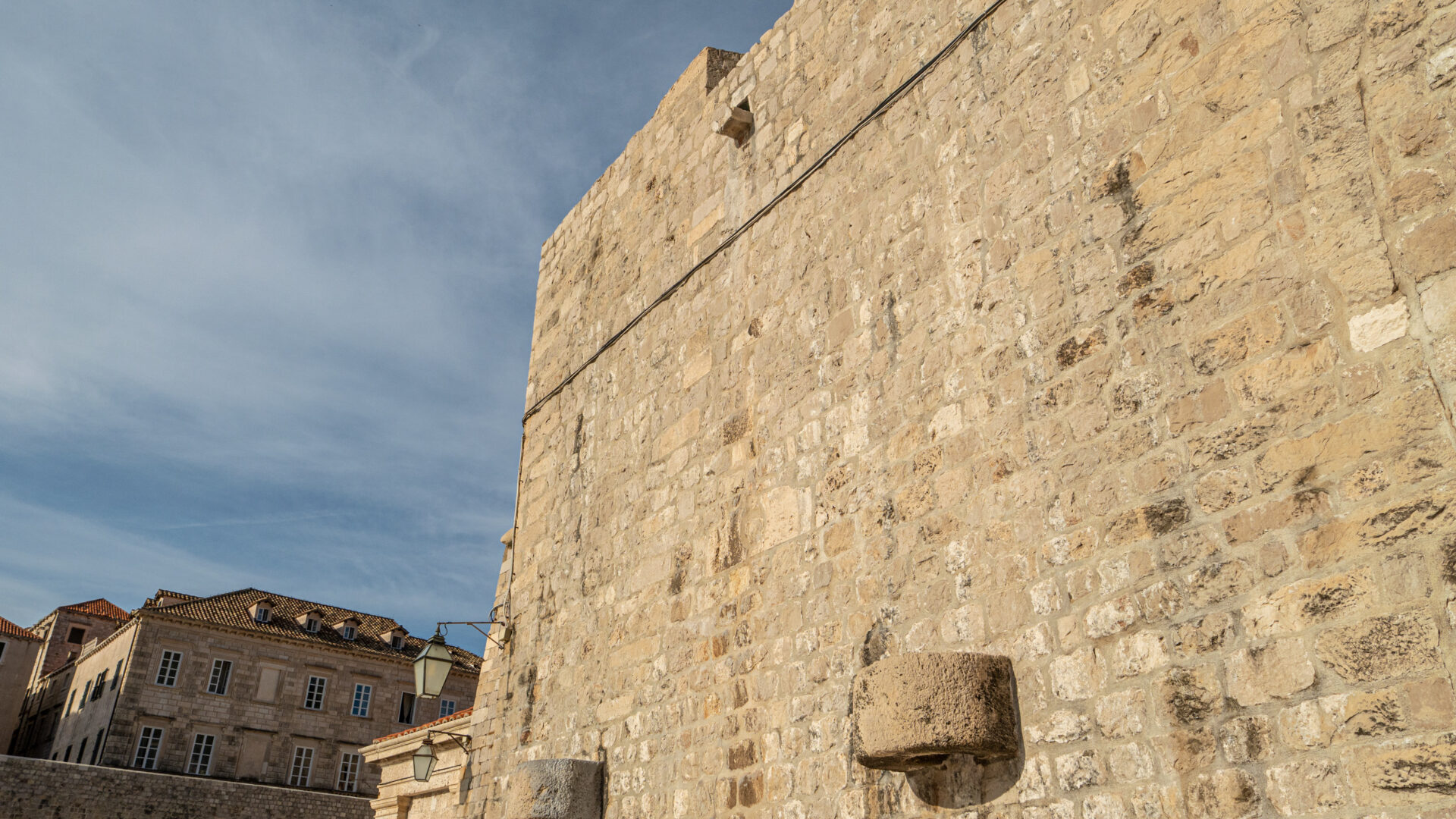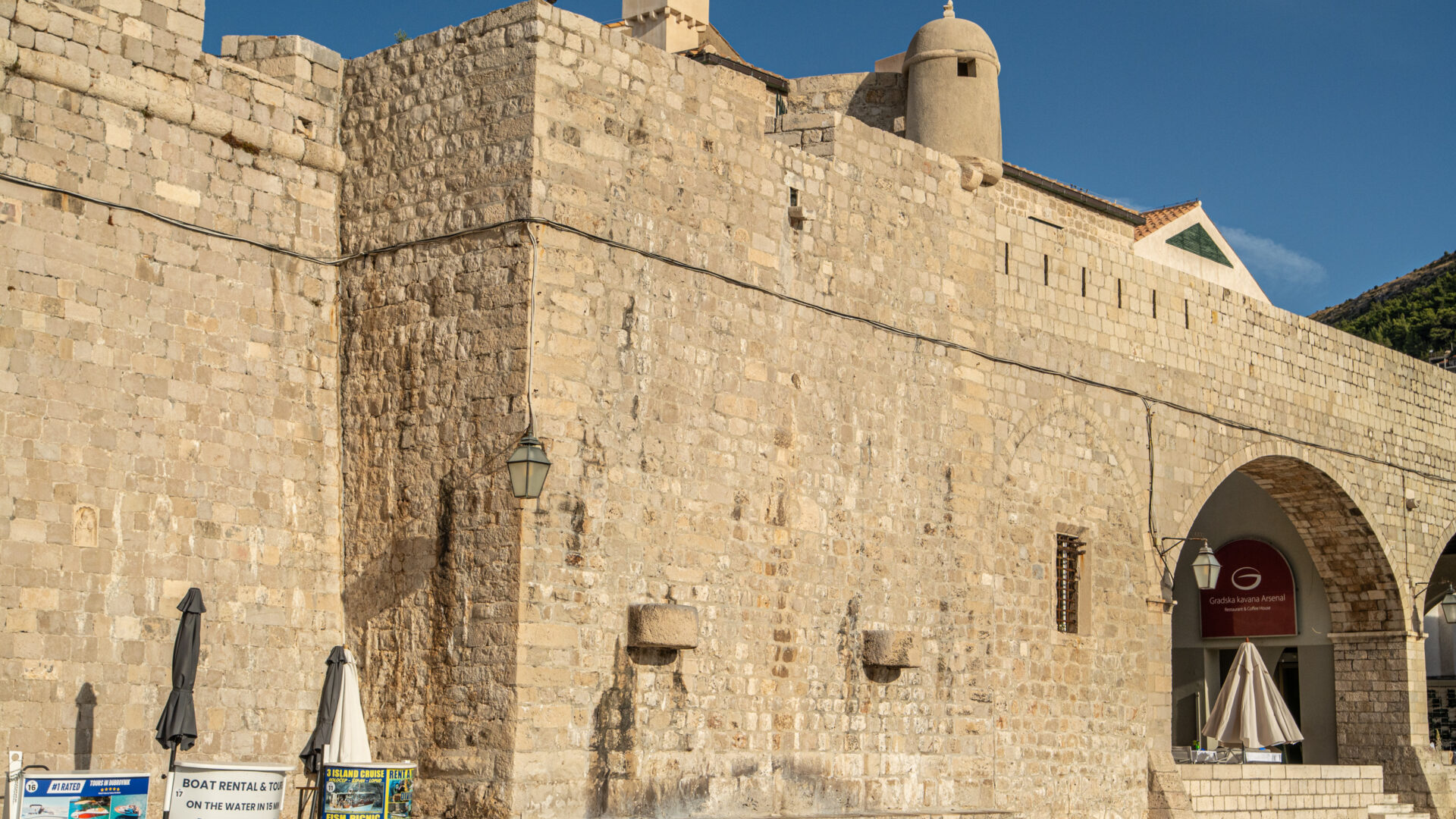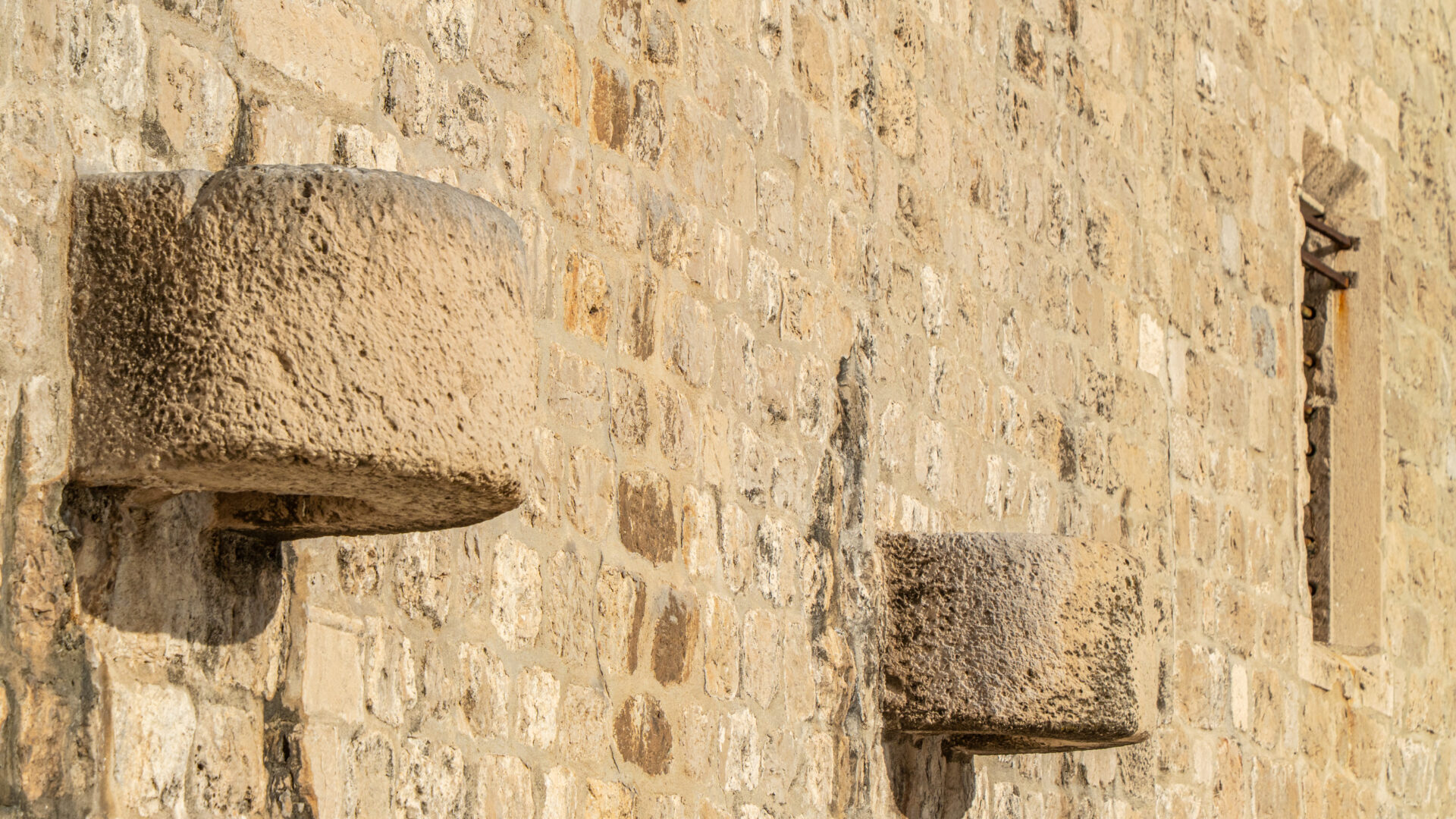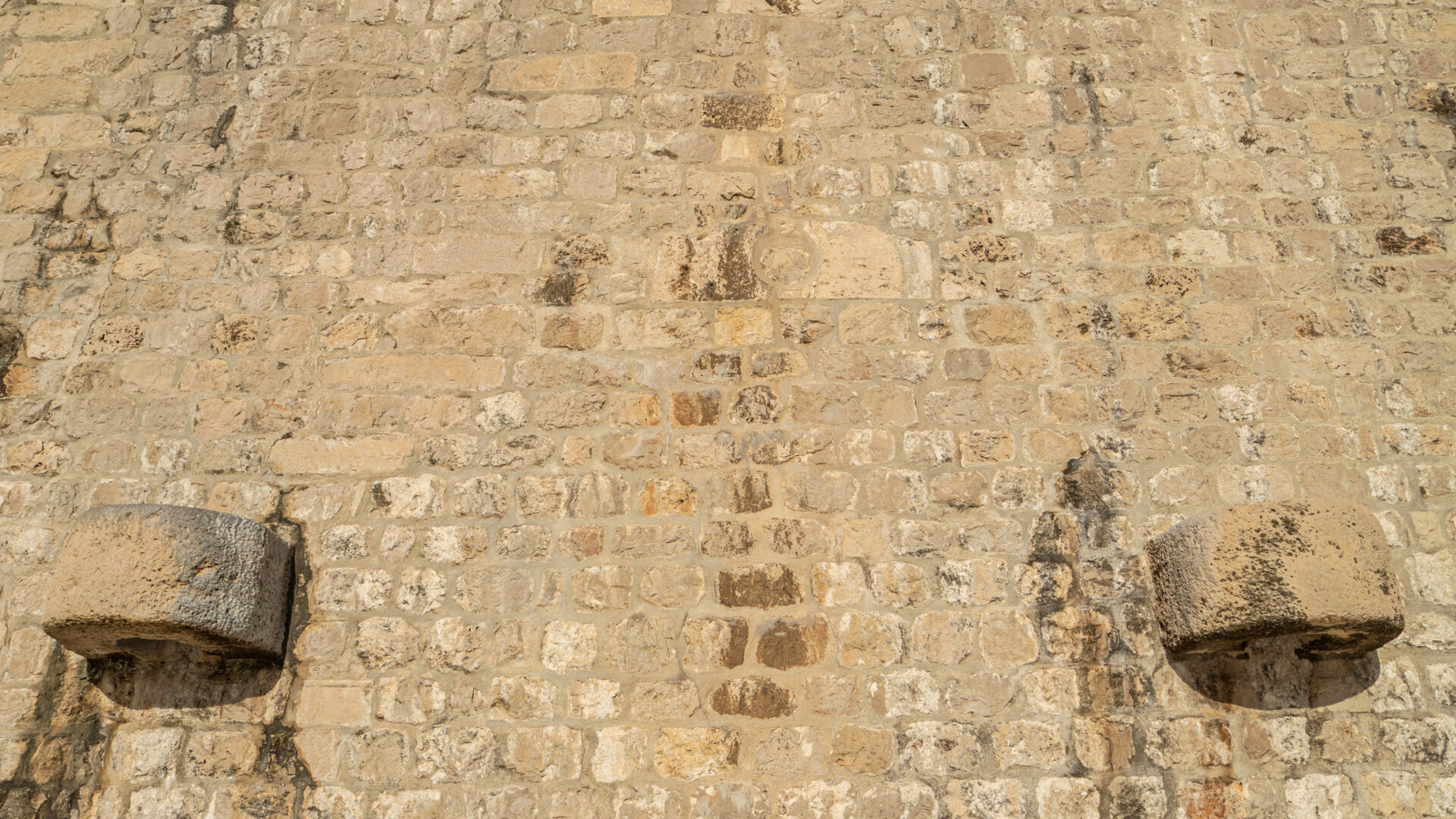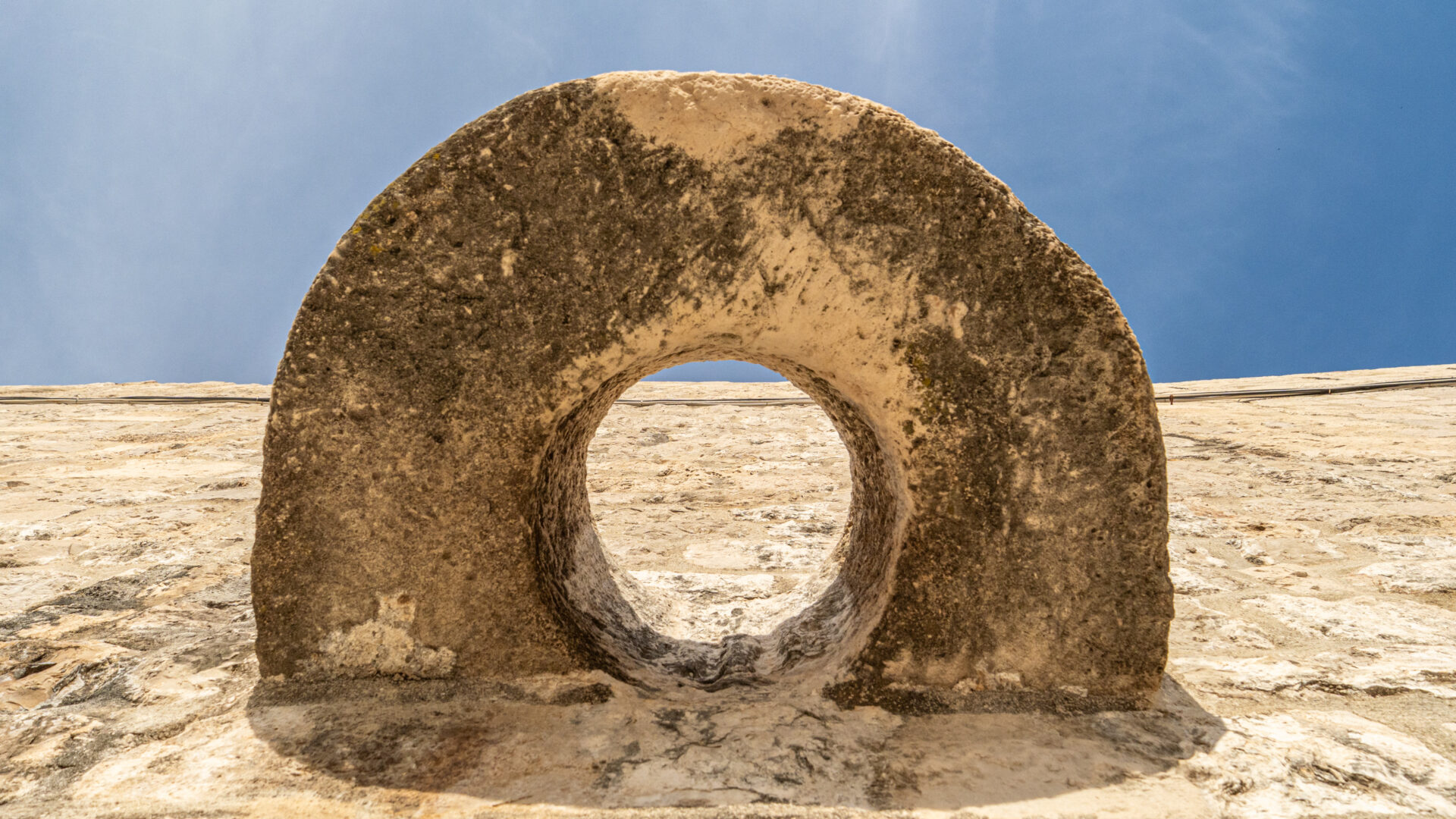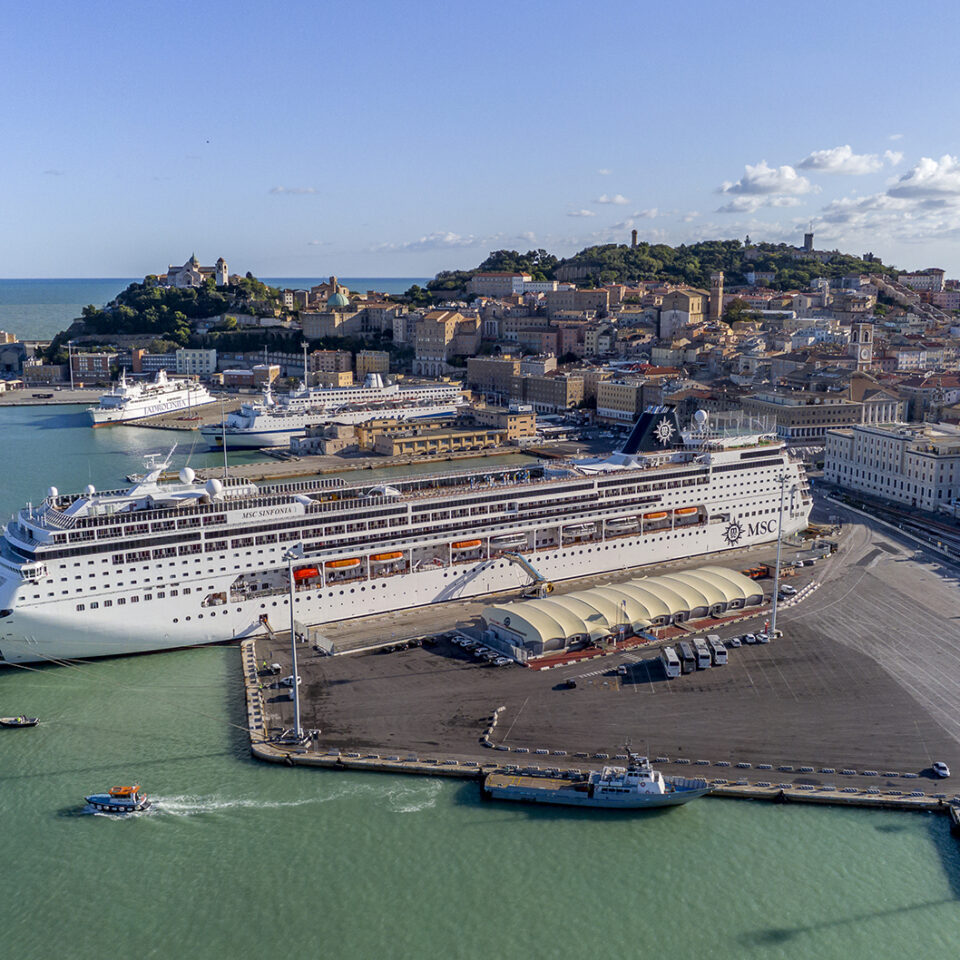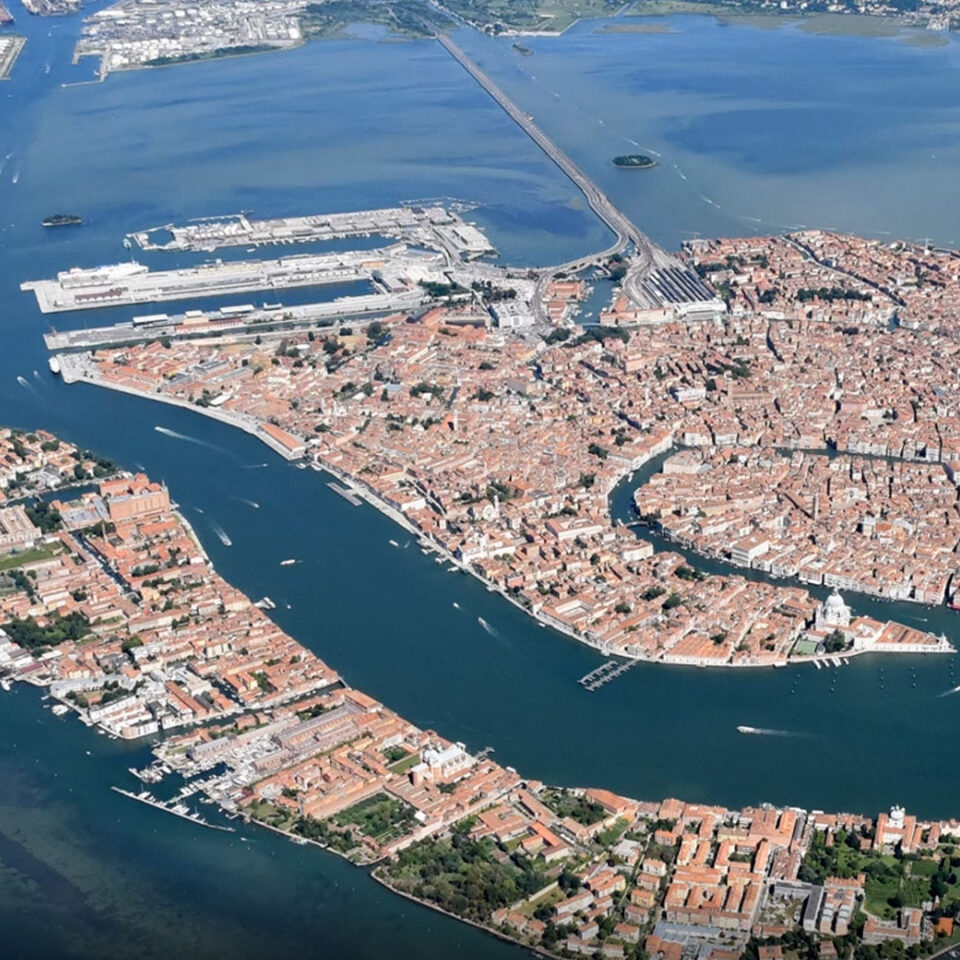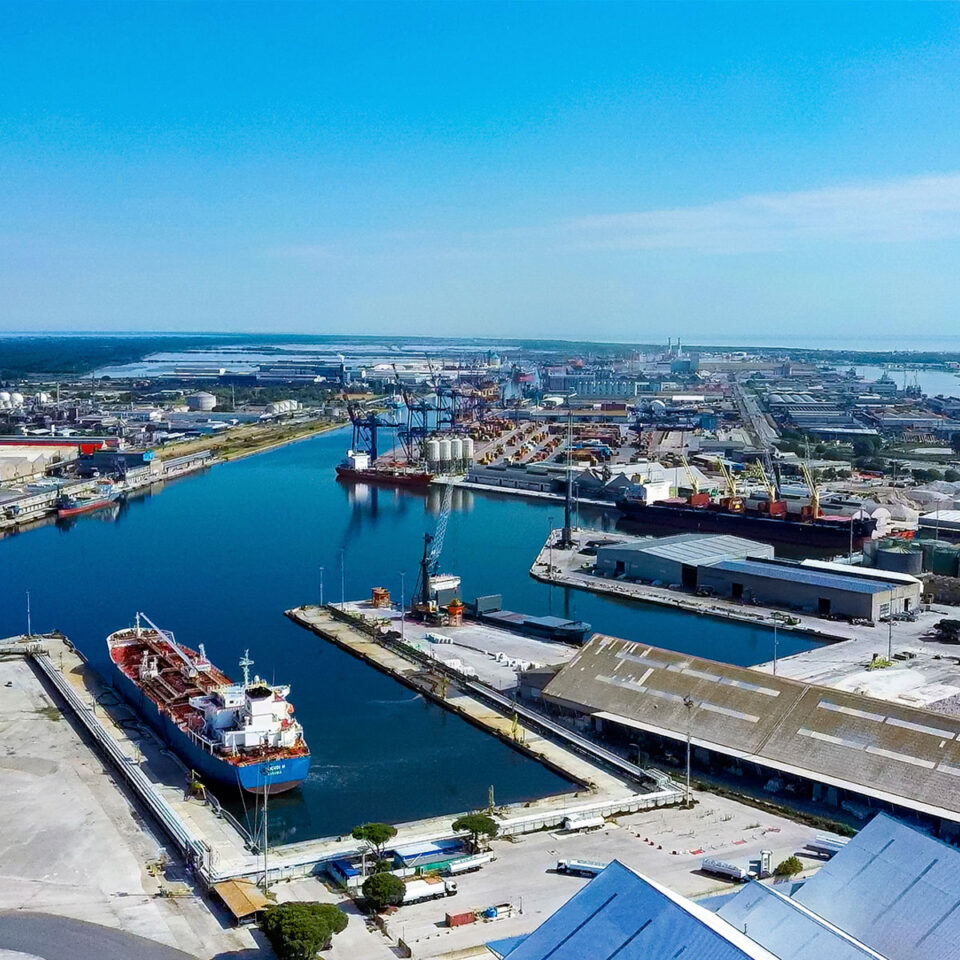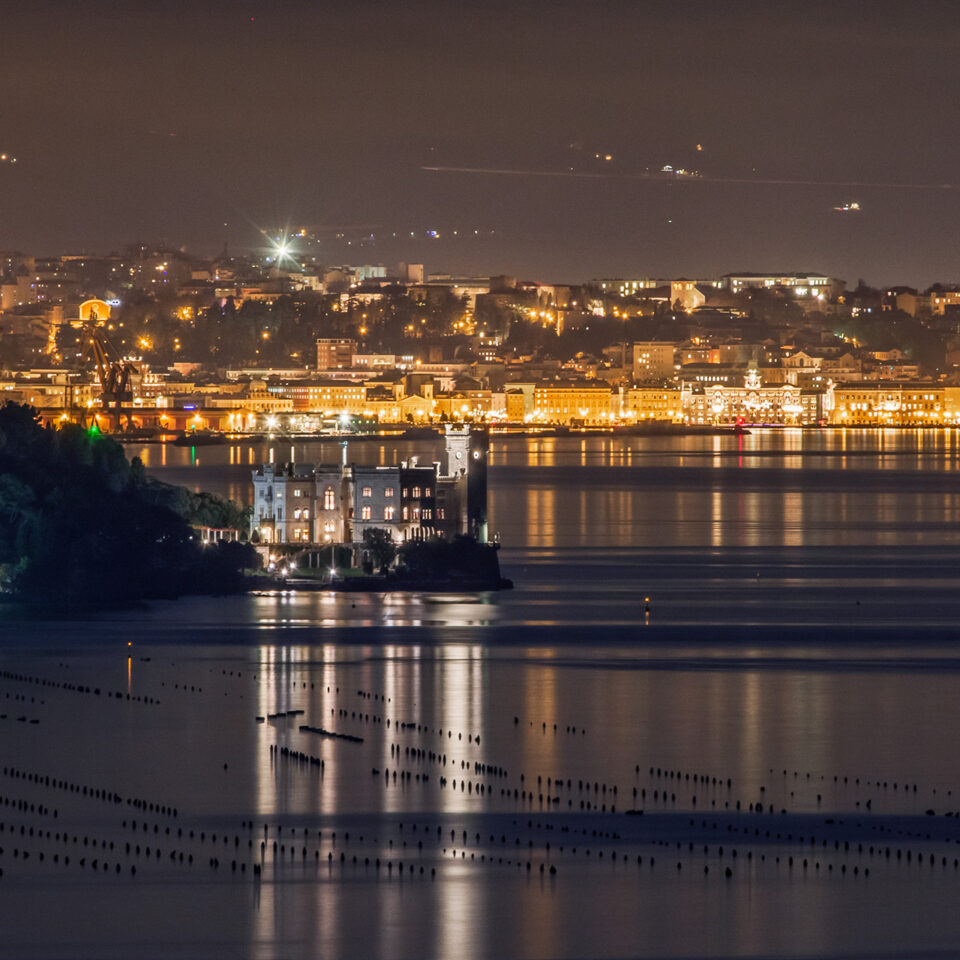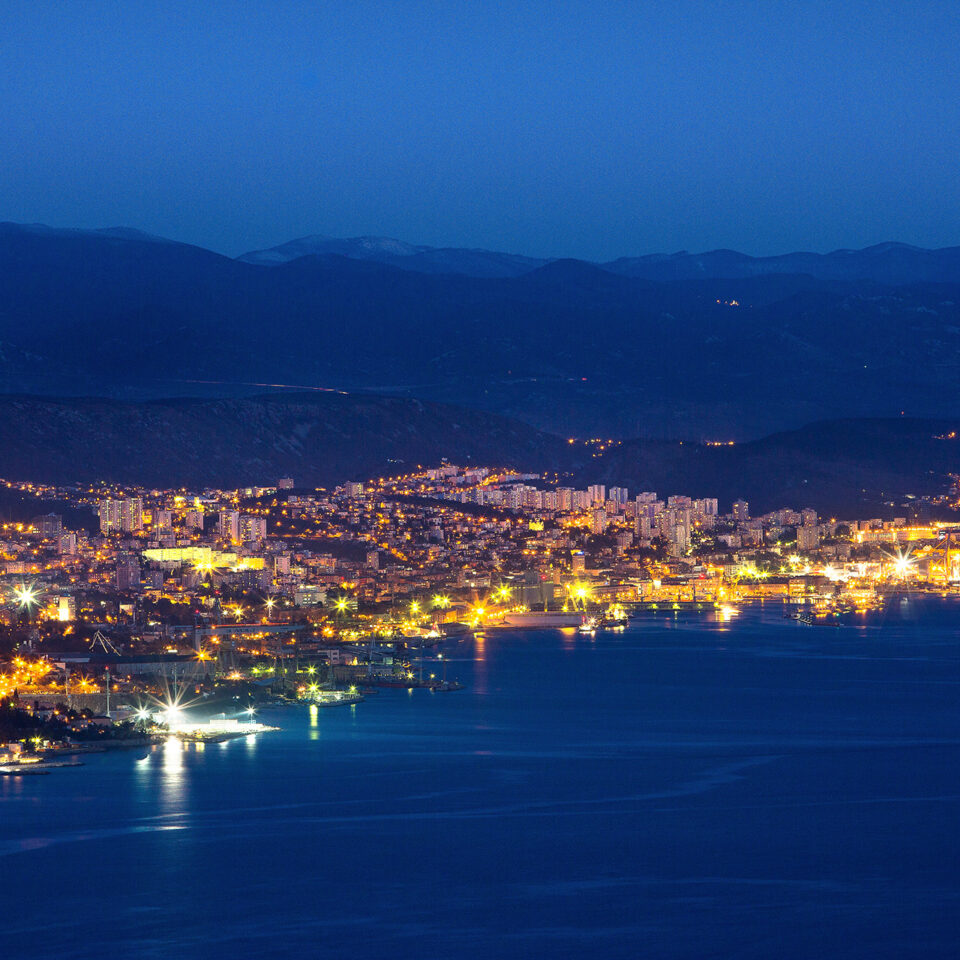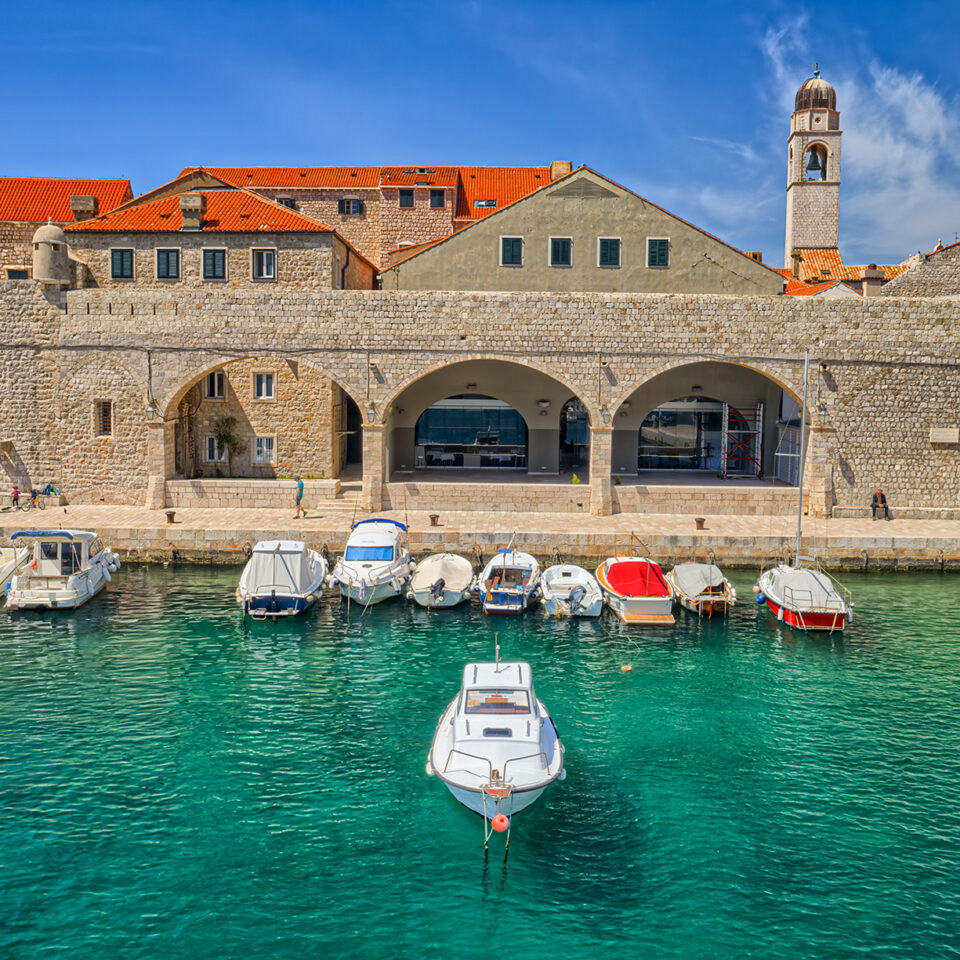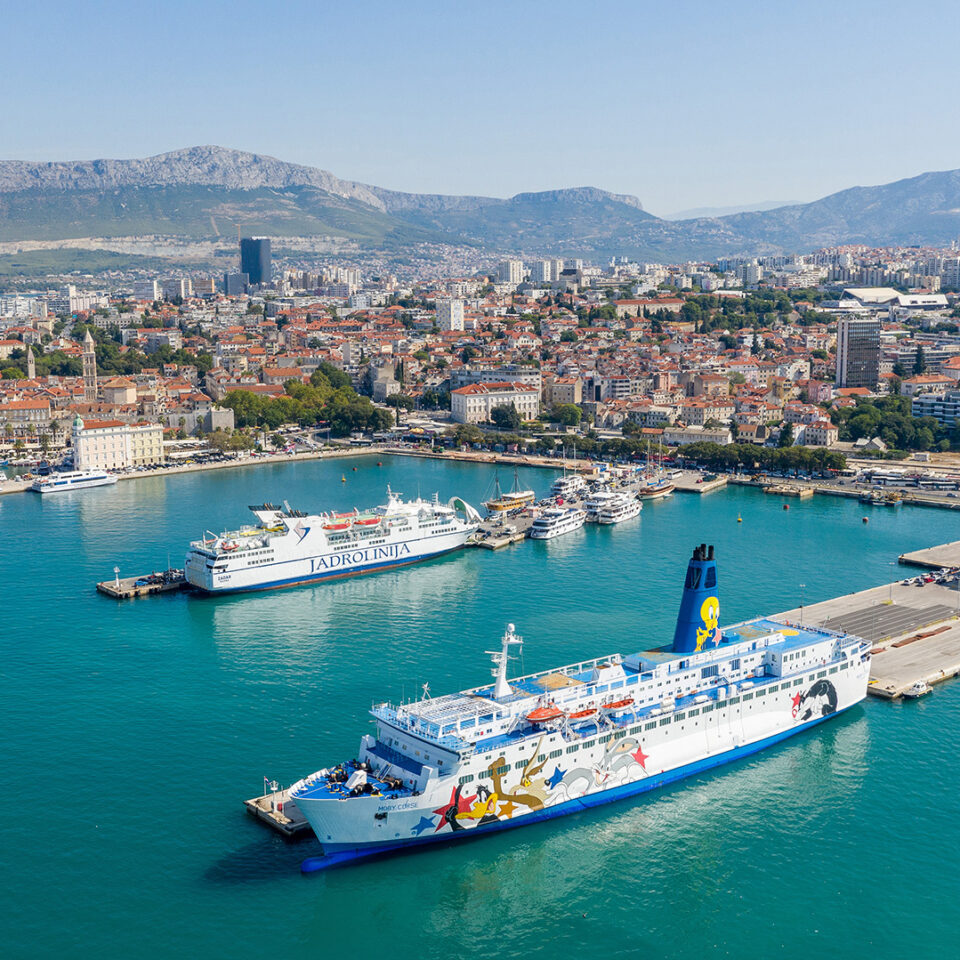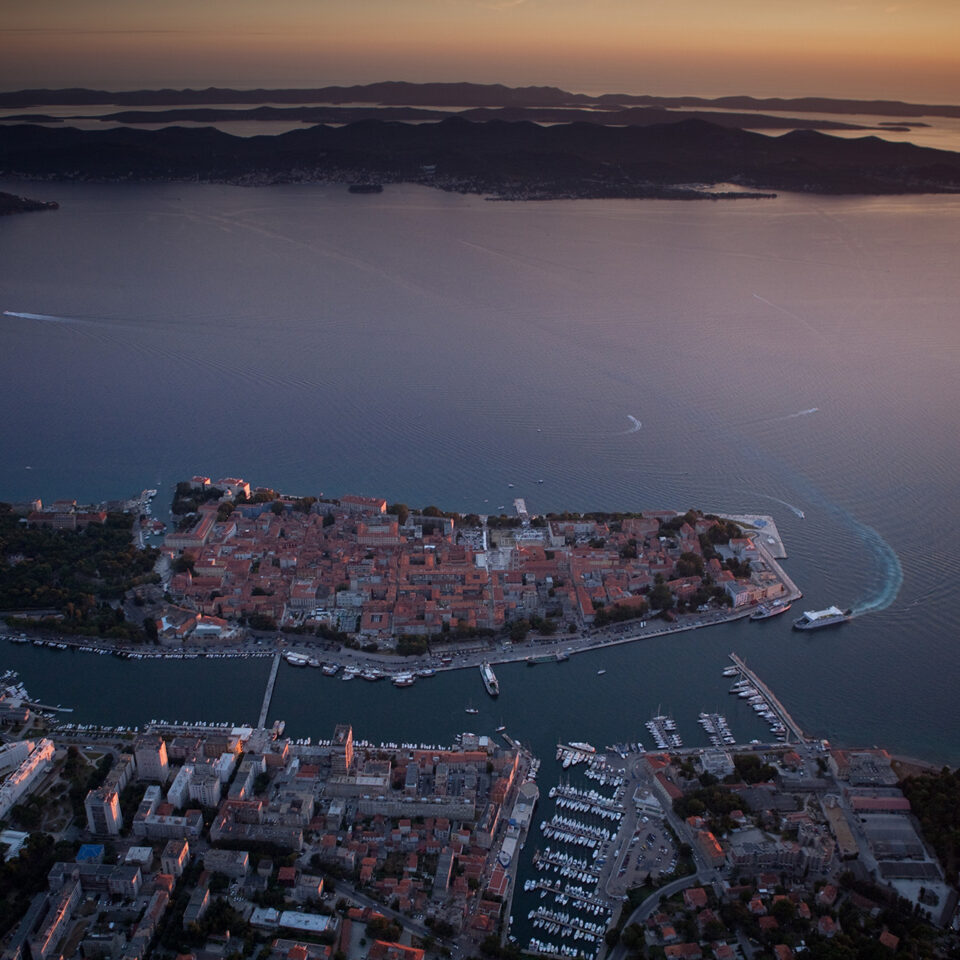

PENALTY TOWER
The Penalty Tower played an important role in the fortification system of the harbour. It was located at the south-eastern corner of the Great Arsenal. The tower was most likely built in the second half of the 13th century, first time mentioned in preserved sources in 1350, in connection with repairs, when it was decided to build a wooden parapet fence on its crenelation.
In 1366, it was mentioned in the list of guard posts. It was recorded under the name turris della pena, named after prisons located on the ground floor of the tower. The underground corridor connected it to the Rector’s Palace. In 1420, the tower was raised to the level of other towers, gaining cannon openings. The municipal fontik – a warehouse and grain market noted in the Statute from 1272, was built along the north wall of the tower, connected with it by a gate.
In front of the Fontik there was a triangular pier, most probably built at the end of the 13th century, protecting the tower from the wave impacts, with mooring bollards for securing docking for ships unloading at the fontik. The remains of the triangular pier were discovered in 2003 during restoration of the collapsed coastline in front of the arsenal.
At the end of 15th century Fontik lost its function, the entrance door was walled up, which is still visible today. On the eastern façade of the tower, a preserved pointed arched stone window is visible. At that time, a small passage was left, ensuring communication with the Arsenal and the Palace, which was closed in 1869 during construction of the shore on that place.
Nowadays, only a few remains of the sealed stone arch remained visible there. In 1619, a guardhouse was built on the north side of the tower, from which the arsenal and the harbour were monitored. On the eastern facade of the tower there were two stone rings which were long thought to be used for mooring ships, but later research proved they were used for securing the harbour chain.

